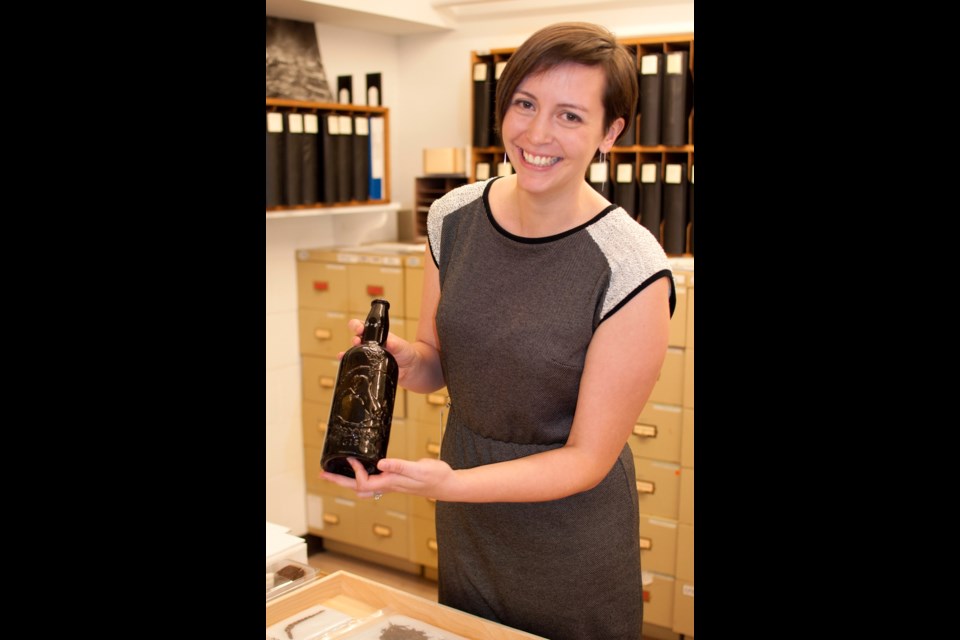Fascinating archeology can be conducted at construction sites in the middle of Victoria, demonstrating worthwhile historical artifacts don’t just come from places like ancient Egypt.
Proving it is Katherine Cook, a sessional lecturer in the University of Victoria’s anthropology department. She let about 35 students loose this fall on artifacts and observations from three construction sites in Victoria.
Students were allowed to handle and examine items, including First Nations tools retrieved from a building site on Songhees land in Vic West, ceramics from old Chinatown revealed during the Johnson Street Bridge construction, and military items dredged from Esquimalt Harbour.
“Pretty well anywhere you are building anything, you will find interesting stuff, because people have been pretty well everywhere,” Cook said.
The items are part of a one-day exhibit today at the Royal B.C. Museum. The public can see and handle some of the artifacts. Digital displays including auditory sound-scapes accompany certain exhibits, while electronic maps show historical locations and context.
“It’s a good opportunity, because so often we go to museums and the artifacts are behind glass,” Cook said.
“You don’t get to be up close and personal with them.”
Genevieve Hill, anthropology collections manager at the Royal B.C. Museum, said the artifacts reveal clues about people — such as Chinese labourers and craftspeople — who are under-represented in early Victoria’s historical records.
“This is actually a really cool collection,” Hill said.
She said the location of the finds can offer insight — and raise questions: Did an old cistern on Songhees land, where water preserved perishable pieces like leather shoes and woven mats, just dry up and become a disposal dump? Was it a site to get rid of items owned by people who died from smallpox?
Devon Bidal, a third-year anthropology student, said her main interest is putting humans from the past into a historical context.
“I like to ‘people’ the past,” Bidal said.
She elected to study a Zippo lighter dredged from the Esquimalt Harbour because she was seeking a historical touchstone with a grandfather who sailed with the British Royal Navy.
Most Zippos were carried by Americans or Canadians.
But Bidal found one inscribed with “Vidette” — the name of a Royal Navy vessel.
Third-year student Amanda Fletcher spent a lot of time looking for clues on how the harbour has been used over the generations.
She said the project shows the abundance of physical, historical evidence that is there for those who look.
“Dig deep into any garden in Oak Bay and you will find stuff.”
• Bridging Victoria: Stories from the archeological past runs 11 a.m. to 2 p.m. today at the Royal B.C. Museum, 675 Belleville St.
Note: A previous version of this story misspelled Devon Bidal's name.



